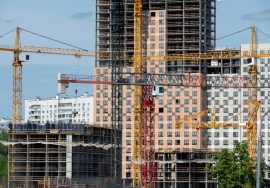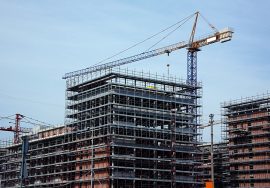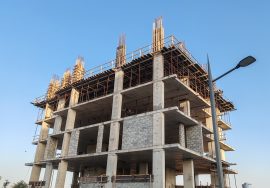
Carbon Reduction in Construction Industry
Carbon Reduction in Construction Industry
The construction sector is one of the largest contributors to global carbon emissions, accounting for nearly 40% of total energy-related CO₂ output. As the world moves toward sustainable development, carbon reduction in construction has become a key priority for builders, architects, and governments alike.
By focusing on sustainable design, eco-friendly materials, and clean technologies, the industry can significantly reduce its carbon footprint and create a greener, healthier environment for all.
Understanding Carbon Reduction in Construction
Carbon reduction in construction involves strategies and practices aimed at minimizing both embodied and operational carbon emissions throughout a building’s lifecycle — from raw material extraction to demolition.
-
Embodied carbon refers to emissions from producing and transporting materials like cement, steel, and glass.
-
Operational carbon includes emissions from heating, cooling, lighting, and maintenance of buildings.
Addressing both is essential for achieving true sustainability and carbon-neutral construction.
Importance of Carbon Reduction in Construction
The need for carbon reduction in construction goes beyond environmental responsibility — it directly impacts energy efficiency, operational costs, and long-term building performance.
Here’s why it’s vital:
-
Environmental Protection: Reduces greenhouse gas emissions and combats climate change.
-
Regulatory Compliance: Meets national sustainability goals and global climate commitments.
-
Economic Efficiency: Lowers energy and material costs over time.
-
Enhanced Reputation: Strengthens corporate image through sustainable practices.
-
Improved Building Performance: Creates energy-efficient, comfortable, and durable structures.
As India continues its urban growth, adopting carbon reduction in construction ensures responsible development without compromising on progress.
Key Strategies for Carbon Reduction in Construction
1. Sustainable Building Materials
Using low-carbon materials such as fly ash concrete, bamboo, recycled steel, and green cement reduces embodied carbon significantly. Locally sourced materials also lower emissions from transportation.
2. Energy-Efficient Design
Incorporating passive design, natural ventilation, and smart lighting minimizes energy demand. This design-first approach is one of the most effective ways to achieve carbon reduction in construction.
3. Renewable Energy Integration
Installing solar panels, wind energy systems, or geothermal heating allows buildings to operate on clean energy, cutting down operational carbon emissions.
4. Waste Management and Recycling
Proper construction waste management ensures that materials are reused and recycled instead of ending up in landfills — reducing both pollution and carbon output.
5. Smart Building Technology
Using IoT-enabled systems for monitoring energy consumption, air quality, and lighting helps optimize performance, contributing to long-term carbon reduction in construction.

Government Policies and Green Standards in India
India has taken strong steps to encourage carbon reduction in construction through various sustainability programs and certifications.
-
Bureau of Energy Efficiency (BEE) – Implements the Energy Conservation Building Code (ECBC) to ensure energy-efficient designs.
-
Green Rating for Integrated Habitat Assessment (GRIHA) – India’s national rating system for green buildings.
-
LEED India Certification – Encourages low-carbon and energy-efficient building practices.
-
National Mission on Sustainable Habitat (NMSH) – Focuses on improving urban sustainability and reducing emissions.
These initiatives are transforming how India builds its future — with sustainability at the core.
Benefits of Carbon Reduction in Construction
Adopting carbon reduction in construction brings multiple environmental and economic advantages:
-
Lower Energy Bills: Efficient systems minimize operational energy consumption.
-
Reduced Emissions: Contributes to national and global carbon reduction targets.
-
Enhanced Market Value: Green buildings attract more investors and tenants.
-
Healthier Spaces: Better indoor air quality and natural lighting improve occupant well-being.
-
Long-Term Sustainability: Supports India’s net-zero carbon vision by 2070.
Through conscious material selection and technology adoption, builders can lead the way in sustainable urbanization.
Challenges in Carbon Reduction
Despite progress, carbon reduction in construction faces barriers like high initial costs, lack of awareness, and limited availability of green materials.
However, with financial incentives, carbon accounting tools, and innovative solutions like prefabricated low-carbon construction, these challenges can be overcome effectively.
Partner with AMS India for Sustainable Solutions
At AMS India, we specialize in carbon reduction in construction through sustainable design, waste management, and energy optimization strategies.
Our expert team helps organizations minimize carbon emissions, comply with green standards, and build eco-friendly projects that contribute to India’s sustainable future.
Conclusion
Carbon reduction in construction is more than a trend — it’s a necessity for sustainable progress. By integrating renewable energy, low-carbon materials, and smart technologies, the construction industry can significantly reduce its carbon footprint.
As India builds for the future, carbon reduction in construction will play a central role in achieving a cleaner, greener, and more resilient built environment.
Read more related articles to enhance your knowledge and make informed decisions
Cost-Effective Modular Construction: Fast, and Sustainable Building Solutions
Smart Modular Buildings: Innovative, Efficient, and Sustainable Construction








